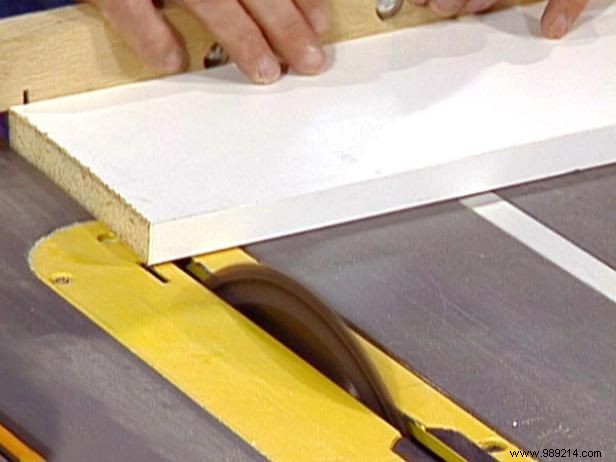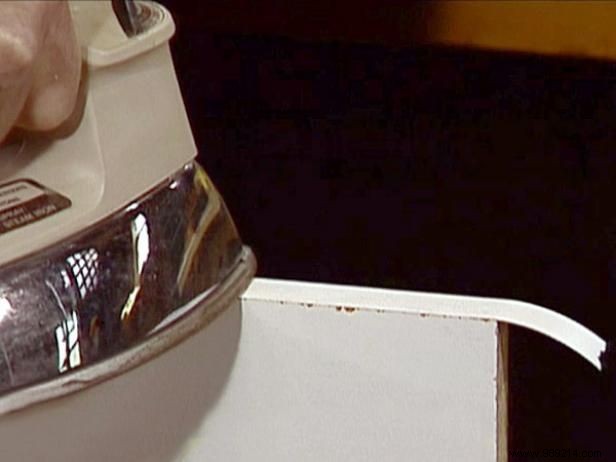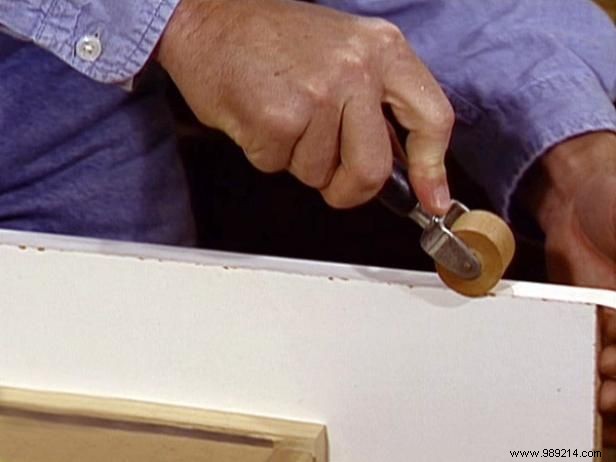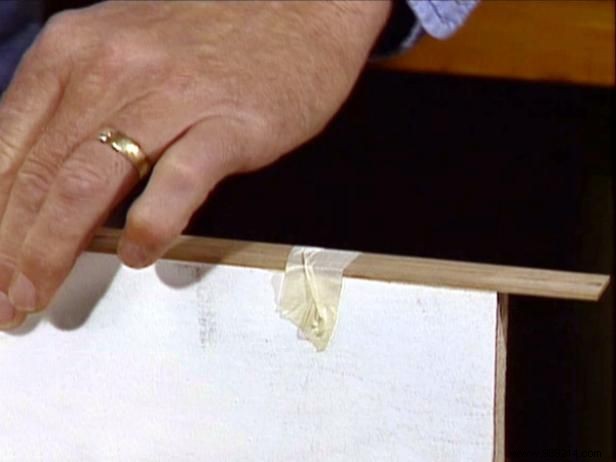Solid wood features distinctive growth rings that run the length of the board and are visible at the cut end. Due to its higher cost (compared to other shelving materials), solid wood is probably not the best choice if the shelving will be painted. It's a good idea to use solid wood only for shelves that will be finished with stain and placed in a room where appearance and quality count.
A second option is plywood . The end of a plywood board will exhibit several bands of wood; it is built for strength and can hold more weight than solid wood. (Also sold in wider widths, such as the 4' x 8' sheets often used for shelving projects.) The downside to using plywood is the appearance. It is unattractive and usually requires two to three coats of paint to cover its many imperfections. Plywood shelving is best used in a "low visibility" area like the garage or basement. You can also find plywood sheets finished with a fine oak, mahogany, or maple veneer. Like standard plywood, the end of the board will reveal multiple bands of wood, but the surface features an attractive grain pattern.
However, as with solid wood, the problem is cost:if you plan to paint the shelves, it is better to use a cheaper material. Particleboard Yet another shelving option, it has become more attractive in recent years as it is now manufactured to have a fairly smooth and even surface (free of large chunks). And, like plywood, it's available in large 4' x 8' sheets that are ideal for shelving. The drawback here? Particle board will not have an attractive, finished look unless it is painted.
Laminated It is, however, an inexpensive option that doesn't require the hassle of painting. Laminate has a particle board finish with a smooth white surface. It's sold in the shelving section of most home improvement centers (along with solid wood, plywood, etc.) and is fairly inexpensive.

When using laminate for shelving, the first priority will be to cut the material correctly. A common problem with cutting laminate is a rough, chipped edge, which is usually caused by a dull saw blade or the use of a saber saw. Using a sharp carbide-tipped blade (preferably on a table saw) is the best option for a smooth edge. And the more teeth the better:the blade used here has 64 teeth, and some fine-tooth blades have as many as 100. To make the cut, carefully lay the board on the surface and gently run it across the blade. The result will be a clean, even cut without the slightest jag on the edge.


Now all that remains is to finish the cut edge. When shopping for laminate shelving, look for the matching laminate tape in the same section of the home improvement center. This tape is impregnated and easy to apply - simply place the cut length of laminate in a vise to hold it steady, run a tape along the edge of the board and cut the tape at the ends, leaving just an extra inch or two on each side. After making sure the tape is along the edges, use an iron heated to the highest setting to activate the glue and stick the tape to the surface (Image 1).
Although the tape should be held at certain points as you work, be sure to keep your fingers away from the edges of the iron and use only the tip to press the tape into place. To avoid burning the tape, be sure to continuously move the iron back and forth; Do not let it rest at any point. Once all the tape has been ironed on, use a small roller (Image 2) to help the soft glue adhere to the surface below.

For those who prefer a more finished and personalized look, a small strip of wood can be used instead of laminated tape. Simply cut the correct length (on a table saw), then apply a bead of glue along the edge of the laminate board.
Carefully press the strip of wood into place, making sure the edges are even. Then use a few small pieces of tape to hold the strip in place while the glue dries.
Note: Note that you can also glue a strip of wood directly onto the laminated tape if you decide to add this detail after the tape has already been laid.
If the shelves benefit from having a slightly raised edge or "lip," cut the strip a little thicker than the wood; for example, a 3/4" piece of laminate can be edged with a 1" strip.